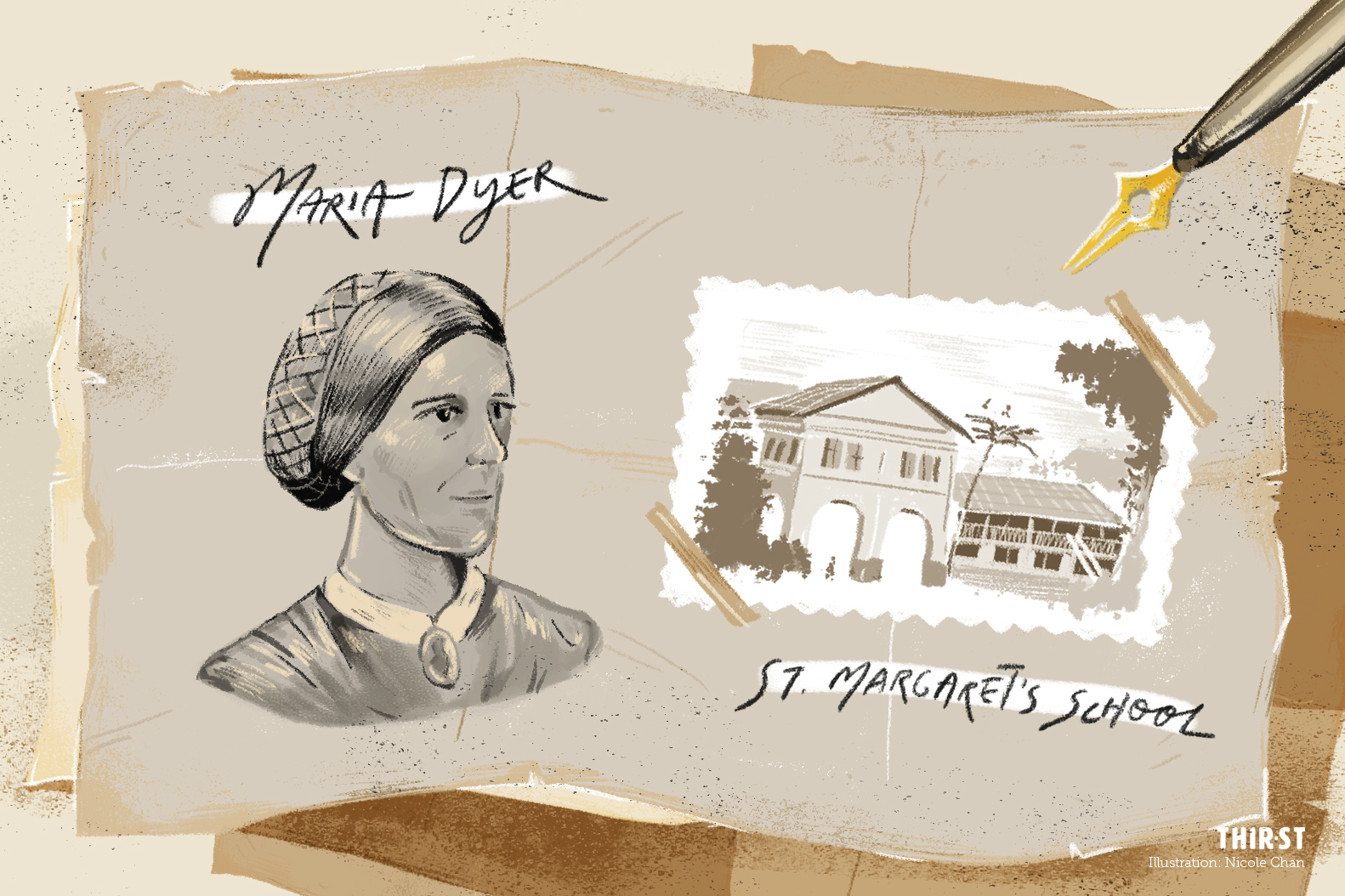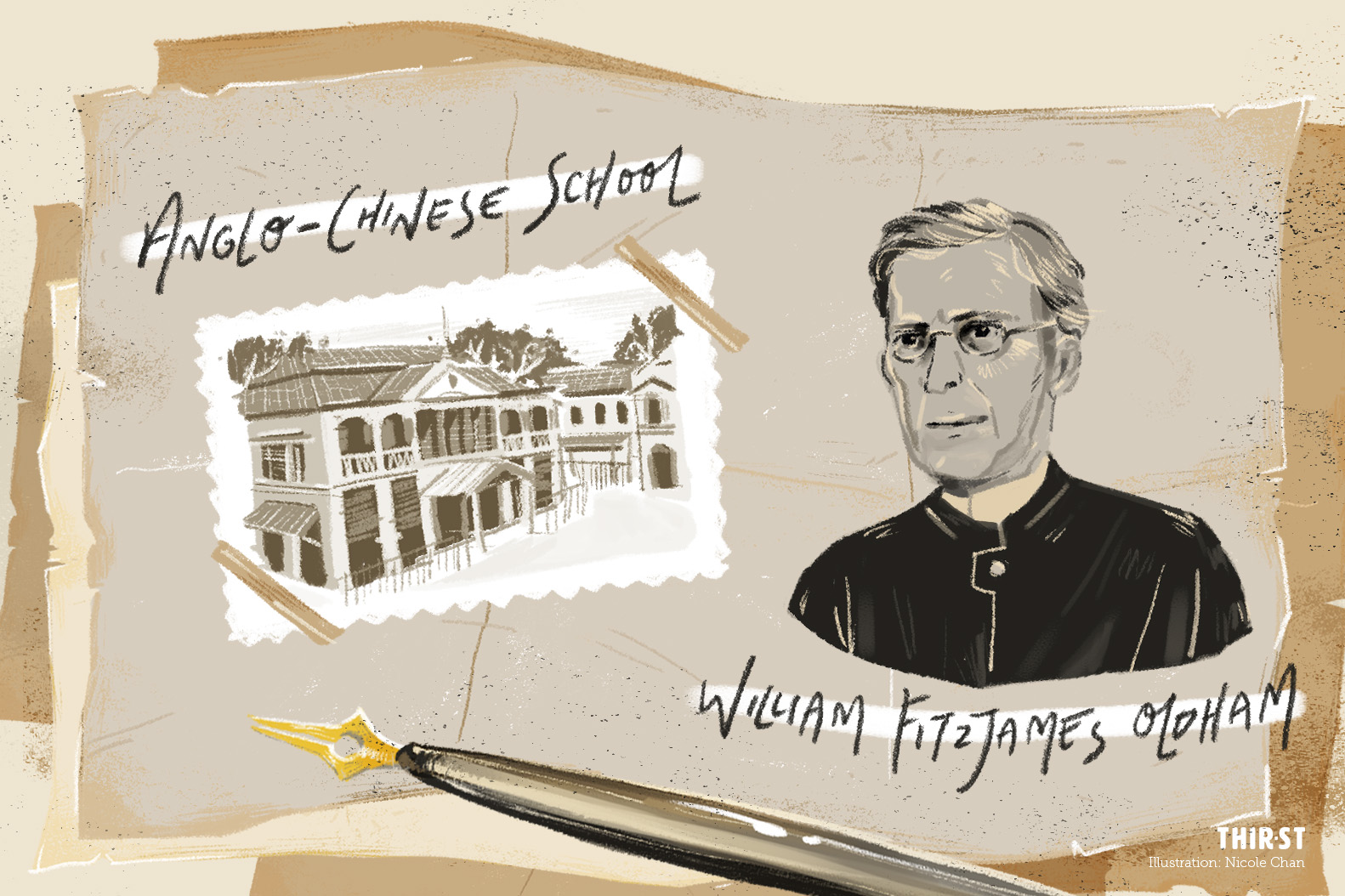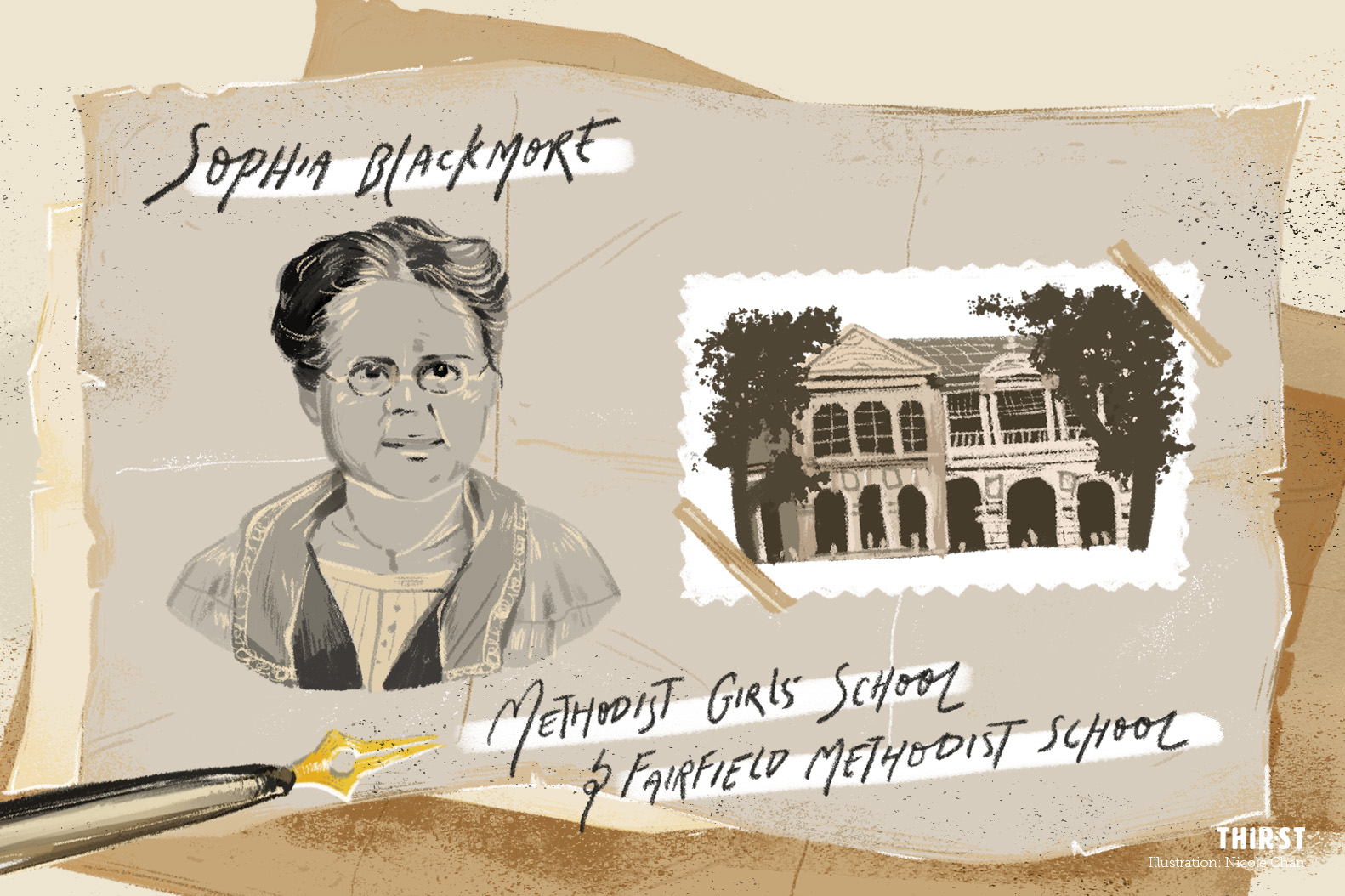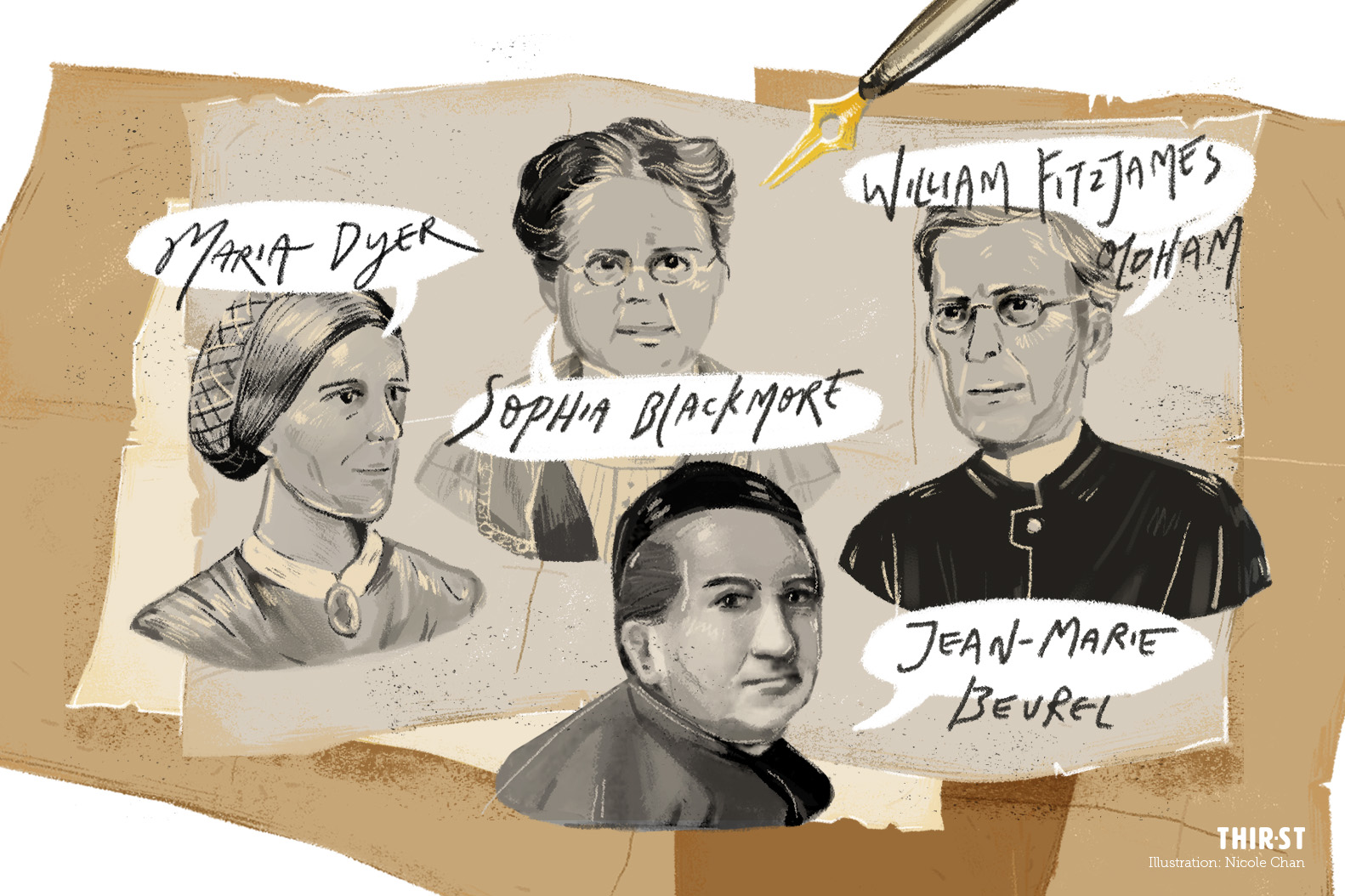It’s been 200 years since Sir Stamford Raffles arrived on our shores. When we celebrated our bicentennial in 2019, we remembered how the founder of modern Singapore opened the door for missionaries to our nation, marking the beginnings of the Christian faith here.
In an interview last year, we asked Joseph Chean, national director of missions agency YWAM Singapore, on his thoughts for Singapore in 2019.
He mentioned the contributions of foreign missionaries towards Singapore’s history:
“We were unreached, we were broken, we were poor, and nobody even knew that we existed. But God found us and God brought people to come.
“And when they came, their gospel was not just a churchy gospel, their gospel was a social gospel because they met the needs of our community. One of the most significant things that they created were schools!”
These schools include Anglo-Chinese School, Methodist Girls’ School, Fairfield Methodist School, St. Margaret’s School, St. Joseph’s Institution and the Convent of the Holy Infant Jesus.
Who were these pioneers who founded Singapore’s first schools and what motivated them to leave their comforts of home?

Maria Dyer, founder of St. Margaret’s School
It was 1827, and Maria Dyer was all of 24 years old when she sailed from England to Penang with her husband Samuel Dyer not long after their wedding.
Members of the London Missionary Society, the Dyers carried out their missionary work in the Straits Settlements, then British territories in Southeast Asia.
The couple picked up the Hokkien dialect so that they could reach out to the children, and within a year of her arrival, Maria had established a school for 22 girls in Penang while Samuel worked to produce a manual printing system to distribute Chinese Christian literature.
After a long leave of absence back in England, the Dyers returned to our part of the world in 1842. They were transiting in Singapore and on the way to China when Maria was moved by the plight of the mui tsai (“little sisters” in Cantonese) or bonded domestic servants.
Having had success in establishing girls’ schools in Penang and Malacca in the years before, Maria obtained permission to house the girls and began to teach them English, the Christian faith and home economics.
That was the beginning of the Chinese Girls’ school which was later renamed St. Margaret’s School, in honour of Queen Margaret of Scotland.
It has been said that the girls’ school was the first in Singapore, established during a time when the education of women was considered unimportant.
(Extra tidbit: Samuel and Maria’s daughter, also named Maria Dyer, married Hudson Taylor in 1858. Taylor is often regarded as one of the greatest missionaries to China.)

Bishop William Fitzjames Oldham, founder of Anglo-Chinese School
Some 40 years after the Dyers first settled in Singapore, the Oldhams – Indian-born William and his wife Marie – arrived in Singapore on February 7, 1885 on the SS Khandalla to begin pioneering Methodist work in Singapore with James Thoburn, a missionary elder in India.
By February 22, a Methodist church had been established in Singapore and 31-year-old Oldham was the pastor – he would later be appointed as the Bishop of the Methodist Church in Malaya.
In the same month, Oldham became acquainted with the Celestial Reasoning Association, a debating society formed by the Straits Chinese who were keen to develop their English proficiency.
He was then invited to speak about astronomy by a member who also happened to be the first Chinese gentleman to join the Methodist Church in Singapore. At the home of influential businessman Tan Keong Saik, Oldham delivered the talk to 30 Chinese merchants after a banquet.
Tan then engaged Oldham as an English tutor, and the former’s speeches at the Legislative Council caught the attention of other Chinese merchants who also sought help from Oldham for themselves and their sons.
When Oldham desired to establish an English school for Chinese boys, he was thus able to easily obtain help from affluent Chinese businessmen.
In 1886, Oldham founded the Anglo-Chinese School in a rented shophouse at Amoy Street. The initial cohort had just 13 boys, but in just a year, the school had about 150 boys and moved to a building at Coleman Street.

Sophia Blackmore, founder of Methodist Girls’ School and Fairfield Methodist School (Secondary)
Just two years after the Oldhams, Sophia Blackmore arrived in July 1887 as a 30-year-old Australian missionary who wanted to work with girls and women in Singapore.
By divine coincidence, she was the answer to a request made by Oldham to the Woman’s Foreign Missionary Society in the US for a female staff in Singapore. Within a month of her arrival, Blackmore opened a school for Tamil girls that would later be renamed Methodist Girls’ School.
Blackmore’s frequent horse-carriage visits to homes in the Telok Ayer area eventually led to the establishment of a second school for girls.
Despite the fact that education for girls was not common back then, Tan Keong Saik as well as other wealthy Chinese families had persuaded her to teach their daughters. A widow also offered her home at Cross Street for Blackmore to start a school for girls.
With just eight students, the Telok Ayer Chinese Girls’ School began lessons in August 1888 and grew to become the Fairfield Girls’ School in 1912 after moving to Neil Road. After relocating to Dover Road in 1983, boys could now enrol in the school and it was renamed Fairfield Methodist Secondary School.
In 1890, Blackmore was also moved to set up a boarding home for girls at Sophia Road. The home served as a residence for school-going girls, mui tsai, abandoned girls and orphans.
Blackmore’s girls, as they became known, were nurtured in the Christian faith.

Father Jean-Marie Beurel and the De La Salle Brothers, founders of St. Joseph’s Institution
Leaving France almost 200 years ago, Father Jean-Marie Beurel landed on our shores in October 1839, where he would make a significant difference in the Catholic community and realm of education.
Only 26 years old when he arrived, the capable young man began serving as the priest of the Good Shepherd parish along Bras Basah Road, where the Singapore Art Museum now stands.
The young priest received his first task from Bishop Couverzey – he was to look into building a larger church for the growing Catholic community.
Wanting to set up a Catholic school for local boys, Father Beural persuaded Bishop Couverzey to build the larger cathedral elsewhere, keeping the existing chapel site for a boys’ school.
In 1847, the Cathedral of the Good Shepherd, located at the junction of Queen Street and Bras Basah Road, was finally completed. Gazetted as a national monument, it is known for being the oldest surviving Catholic church in Singapore.
Father Beural also laboured to bring his dream of a school for boys and girls into fruition, reasoning that the school was necessary for nurturing faith in the hearts of the children.
Enlisting the help of the Brothers of the Christian Schools (also known as the De La Salle Brothers), a group of them arrived in 1852 to set up the school, which would become the oldest Catholic school in Singapore.
On July 22, 1852, St. John’s School opened its doors and received 75 boys as its first batch of students. Boys from all ethnic groups and religions were welcome.
The school was later renamed St. Joseph’s Institution in 1867, after the cornerstone of the expansion building was laid on March 19, on the Feast of St. Joseph.

Father Jean-Marie Beurel and Infant Jesus Sisters, founders of the Convent of the Holy Infant Jesus (CHIJ)
Convicted that there was also a need to educate girls, Father Beurel had written to the Infant Jesus (IJ) Sisters in France to send nuns to Singapore to set up a girls’ school here.
Father Beurel himself accompanied the first mission of four sisters to Singapore in 1851. Unfortunately, the arduous five-month journey from Belgium saw the death of one of the Sisters.
Upon their arrival, the remaining Sisters were redirected by Bishop Jean-Baptiste Boucho to open a school in Penang instead, to the dismay of Father Beural. Undeterred, Father Beurel took it upon himself to buy a plot of land on Victoria Street using his own money.
However, it wasn’t until 1854 that another group of four IJ Sisters came to Singapore, which led to the opening of the first CHIJ school (currently the site of CHIJMES) just 10 days after their arrival. The school was started with 14 fee-paying pupils, nine boarders and 16 orphans. In addition, the Sisters also established an orphanage and a boarding house.
One of the pioneers, Mother Mathilde Raclot, wrote about an encounter with the Lord during her time here:
“One day in Singapore, I was in need of 2 francs to pay the baker. However, I had made this text of Scripture my law ‘the labourer is worthy of his hire’. Preoccupied with this deficit, however trifling it may have been, I went to Chapel and having exposed it to Our Lord, I tried not to think of it any more, full of confidence that the Divine Goodness would help me in some say.
I had scarcely genuflected to begin my prayer when I saw a child coming towards me and offering me in his open hand money I needed to settle my account. He was one of the Brothers’ pupils and had come to buy a box of plums for them. This providential sign moved me to tears and I have never forgotten it.”
This beautiful testimony of Mother Raclot’s dependence upon God to carry out her mission here is a reminder for us today that God is watching over His people.
She wouldn’t have known that because of the faithfulness of God and her willingness to trust in His providence, she inadvertently played a part in establishing 11 CHIJ schools across Singapore.

Some 200 years after these early missionaries arrived in this part of the world, the ability to receive an education is still a luxury for many in developing countries surrounding Singapore.
Dyer, Oldham, Blackmore, Beurel, the De La Salle Brothers, the Infant Jesus Sisters and many others made it their mission to marry the good news with good works to transform a society – can we do likewise?
Where are the needs today?
- Beyond your own circle of family and friends, what needs do you see around you?
- How can you begin to meet those needs?
- Have you ever considered being a missionary?









